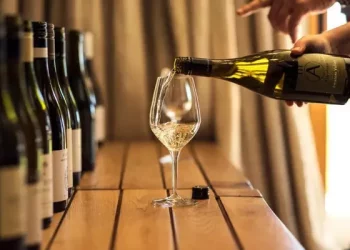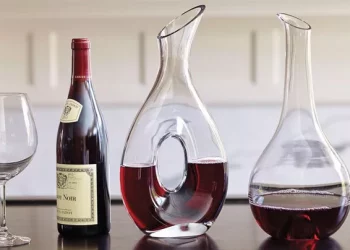When it comes to sparkling wines, France has champagne, Italy has Prosecco and Asti, Germany has Secht, and Spain has what?
Cava.
Cava is the signature sparkling wine of Spain.
This sparkling wine is made in the same way as champagne, but with different grapes.
Let’s take a closer look at Kava.
Cava sparkling wine, although made in the same way as champagne, has a different flavor than champagne, mainly because of the different grape varieties used to make the wine.
In general, the three main grape varieties commonly used to make kava are abeu, Parellada and Xarel-lo, all white;
A few kava are also made with Chardonnay, Pinot Noir, Garnacha and Monastrell, the last three of which are red grape varieties.
Despite its prominence as the primary wine grape in Kava, Ma Jia Pa has a somewhat monotonous flavor, with only a hint of flower and lemon, with a bitter finish similar to that of green apricots.
Zarrello is a rich grape varietal with intense floral aromas and pear or cantaloupe notes;
Pareada, on the other hand, has a naturally acidic and lively citrus flavor.
As a result, these three native Spanish varieties complement and complement each other, resulting in a fruity, well-balanced cava sparkling wine that is not as sweet as Prosecco or as nutty as vintage champagne.
Overall, the cava is similar in flavor to non-vintage champagne, with a bias toward American sparkling wines.
1. Dry or extremely dry kava Sparkling wine Dry or extremely dry kava is suitable for drinking as an aperitif. It has rich fruit flavor and a fresh and refreshing taste.
Super dry kava is a special sparkling wine that has less residual sugar and therefore fewer calories than dry kava, leading to its growing popularity as a substitute for cocktails and lagers.
2. Cava Rose sparkling wine To create a peach cava, winemakers must mix some red wines, so Grenache, native to Spain, has strawberry and raspberry notes, while Muhe White, with its unrefined peach and floral notes, is preferred.
But Pinot noir has grown in popularity in recent years, just not in Spain.
3. Vintage slips and aged slips Vintage slips or aged slips are often associated with nutty and toasty flavours.
Most people know kava sparkling wine as a simple aperitif with a lively aroma, but many of these wines are also suitable for aging.
Vintage and aged kava are often accompanied by attractive aromas of toasted apples and almonds, and many are made with the classic champagne recipe of Pinot Noir and Chardonnay.
Although this exact imitation of France goes against Spanish tradition, it seems to make Cava as good as champagne.
Cava sparkling wine is produced throughout Spain and Cava DO is its official grade.
The majority are kava sparkling wines from Penedes and Ebro River Valley.
There are currently nearly 200 Cava sparkling wine producers registered with the Cava Consejo Regulador in Spain.
In addition, Kava sparkling wine is relatively cheap, thanks to the high degree of mechanization in the production process, from production to storage to bottling, which also reduces its production cost.
The latest market dynamics at any time to see, please pay attention to.












































